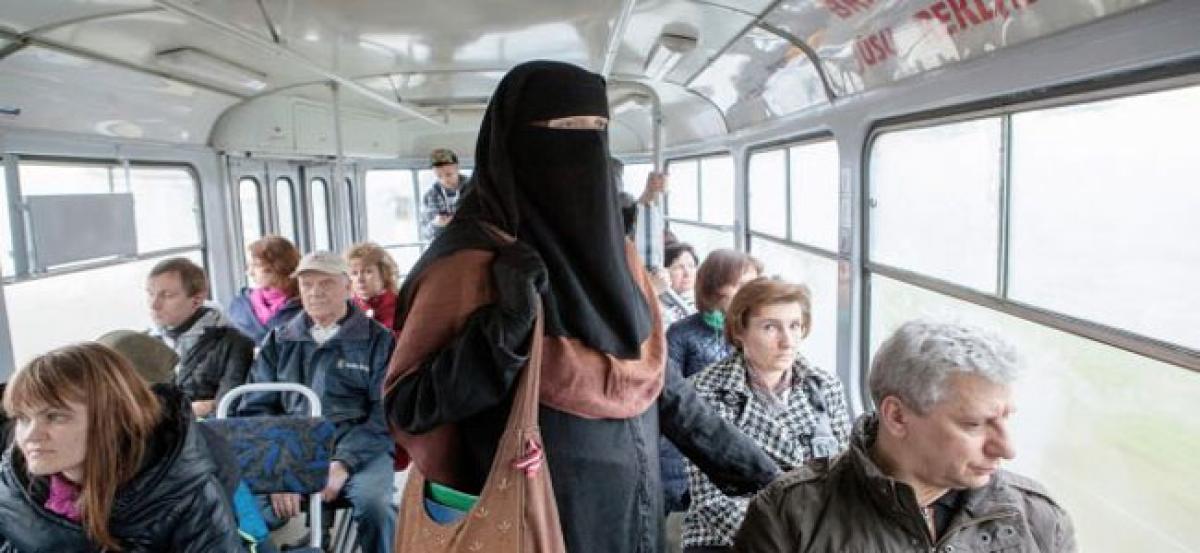Live
- World Heritage Week celebrations conclude
- Coronation of Vishvaraj as Mewar’s 77th successor starts amid questions over palace visit
- Give utmost priority to research: SKLTHU V-C
- IT Min launches ‘Transforming 10,000 Minds’ prog
- TTD Board member interacts with locals in Tirumala
- Uttam prods babus to fast-track irrigation projects across State
- Union minister Pradhan launches 'The Teacher App'
- Oppn members seek more time for JPC on Waqf Bill
- SC upholds ‘secular, socialist’ in Preamble
- RASS conducts Siva Parvathi Kalyanam
Just In

Latvian\'s government estimated that over 2 millions people there is one thousand observant mu slims. And \'among only a handful of women, 3 of them do wear the niqab\', said the New York Times.
Latvian's government estimated that over 2 millions people there is one thousand observant mu slims. And 'among only a handful of women, 3 of them do wear the niqab', said the New York Times.
But for Latvia’s Ministry of Justice, that is three niqabs too many. Citing a desire to protect Latvian culture and to address security concerns at a time of rising migration to Europe, the government is working on proposed legislation, inspired partly by similar restrictions on head coverings in France, that would ban face-covering veils from public spaces. The proposal would not ban the wearing of head scarves that do not cover the face, like hijabs, the coverings most commonly worn by Muslim women.
“A legislator’s task is to adopt preventive measures,” said Justice Minister Dzintars Rasnacs, a member of the anti-immigration National Alliance party, who predicted that the law would win overwhelming backing in Parliament and would be in place at the start of 2017.
The legislation in Latvia is one expression of a broader concern about immigration in general and Muslims in particular across Central and Eastern Europe, as migrants flock to the Continent from Afghanistan, the Middle East and Africa. Hungary, Slovakia and Poland have been among the countries most strongly opposed to taking in large numbers of migrants, reflecting anti-immigrant and anti-Muslim strains in their societies. Even in remote Latvia — hardly a top destination for migrants, given its frosty winters and threadbare welfare system — a darkening swirl of fear has emanated from politicians, the news media and the wider population.
This comes just days after France's Prime Minister Manuel Valls said he wants all forms of Muslim headscarves to be banned in universities. In an interview with the daily newspaper, Liberation, Prime Minister Valls said France should 'protect' French Muslims from extremist ideology. He said the headscarf, when worn for political reasons, oppresses women and is not 'an object of fashion or consumption like any other.'
Asked whether to outlaw headscarves in universities, Mr Valls is quoted as saying 'it should be done, but there are constitutional rules that make this ban difficult.'
The wearing of full-face veils in public spaces has been banned under French law since April 2011.
The 2010 'Act prohibiting concealment of the face in public space', applies not only full-face veils or burqas worn by some Muslim women, but all face-covering headgear, including masks, helmets and balaclavas.
The only exceptions are when ordered otherwise under French law - such as motorbike helmets while riding or for work requiring the face to be covered for health and safety reasons.

© 2024 Hyderabad Media House Limited/The Hans India. All rights reserved. Powered by hocalwire.com







